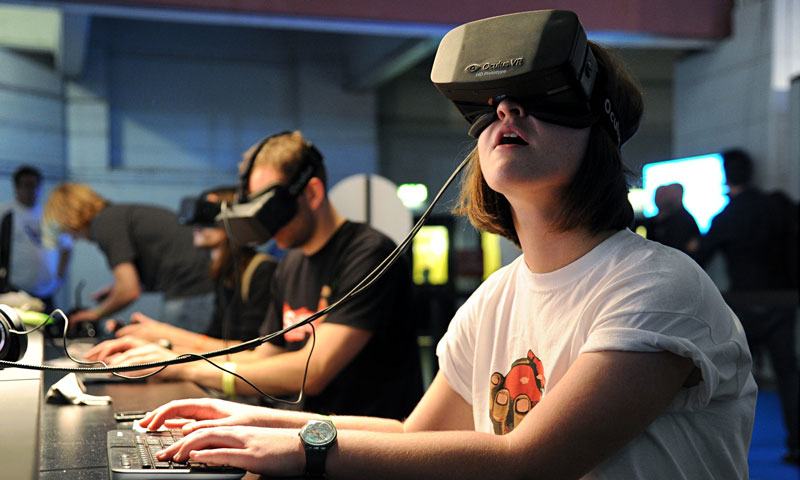Industries and businesses around the world are benefitting from AR and VR technologies in the fields of education, e-commerce, healthcare and more – essentially every niche that could benefit from one of the most innovative tech in recent times is leveraging the duo. Organizations can create more opportunities and take operations management to a whole new level, if Augmented and Virtual Reality are combined with Artificial Intelligence and Machine Language.

AR and VR applications are predicted to improve the way businesses operate and organizational cultures work. If you are an AR and VR application development company, much is coming your way in the future. Here are is an overview of how different industries can benefit from AR and VR to reap more fruit.
Contents
The Healthcare Industry
Today, healthcare industry-wide operations mostly depend on cutting-edge solutions and technology. Augmented Reality and AR-based apps can help minimize the margin of error in an emergency or another critical situation that involves treatment via sophisticated tools and methods. When it comes to saving human life, such applications have the capacity to improve the healthcare ecosystem.
Also, Virtual Reality applications in the healthcare business present better ways to reach solutions and meet challenges that doctors and physicians face while treating their patients. For instance, you can use Augmented Reality to create a telemedicine platform for patients. This will allow patients to use medical consultation and other services without being physically present at the hospital. Telehealth can be employed to monitor a patient’s health from a far off location via video monitoring, recommending pharmacies based on location, simple billing, and integrating health records.
AccuVein is one of the examples as to how AR and VR tech is used by doctors. Capable of providing a clear map of the blood vessels in real-time, the app helps doctors to carry out error-free treatment and perform a clean surgery. Doctors can also use AR training simulators to map motions during physical therapy straight to the patient’s body.
The Education Industry
AR and VR tech and the apps that have taken birth from these innovations, when employed in the education sector can come to provide users with a more effective approach to education – essentially by creating more efficient ways to impart educational information. Technology has facilitated students with educational activities which make traditional lectures more interactive. Interactive audio-visual tools tend to promote e-learning too.
There are different platforms e.g. Augment (Augmented Reality for Education) that are engaged with helping students create a 3D design for e-learning products – using objects and/or animations that would get things done, whether it is creating class presentations or adding value to your classroom lectures.
Another example is that of SignAloud Gloves. SignAloud gloves can become one of the best e-learning tools for students who suffer an impairment. The tool helps them communicate using sign language in a VR environment, while translating the sign language into speech.
The Retail Industry
Retail brands like Lego and others have started using AR and VR based applications to showcase their products. This helps create a very convenient shopping environment for brands as well as the consumer. Another brand which has implemented AR/VR technology for online shoppers is Sephora. Sephora uses a virtual artist who can help you decide which cosmetic product you should select to match the outfit you plan on wearing. This helps customers feel more confident when buying their favorite product while they get the opportunity to try on a wide range of other products too. To add to the experience, users can take pictures too. And besides the virtual attendant, if they need to ask for a second opinion, they can also share these pictures or other information about available alternatives.
One thing however has become a prerequisite for retailers since the advent of AR and VR in the industry and that is reliable high-speed internet – one like you get with Mediacom internet service. After all, reaping the benefit of instant customer response necessitates a solid connection to the World Wide Web!
AR And VR in the Military
AR and VR have been in the hands of the government and the military long before becoming the new tech toy for corporations and consumers alike. It was and is used for specialized purposes only. For instance, VR headsets and goggles are employed to train soldiers on how to handle crisis situations and react on the battlefield – instruction on how to load weapons, operate vehicles and a variety of tools. Virtual training environment has always been used by the U.S. military; more and more advanced training programs and virtual training environments are created to make sure soldiers are always ready to meet the demands of the modern-day battlefield.
Augmented and Virtual Reality have had an impact on the way we shop, the way doctors diagnose disease and treat patients, and it has made education more accessible – especially making it convenient for people who find little time after or before work, but are eager to continue with their studies. Businesses too have started benefitting greatly from creating AR and VR applications as an integral part of their business plans in a bid to expand their profits.